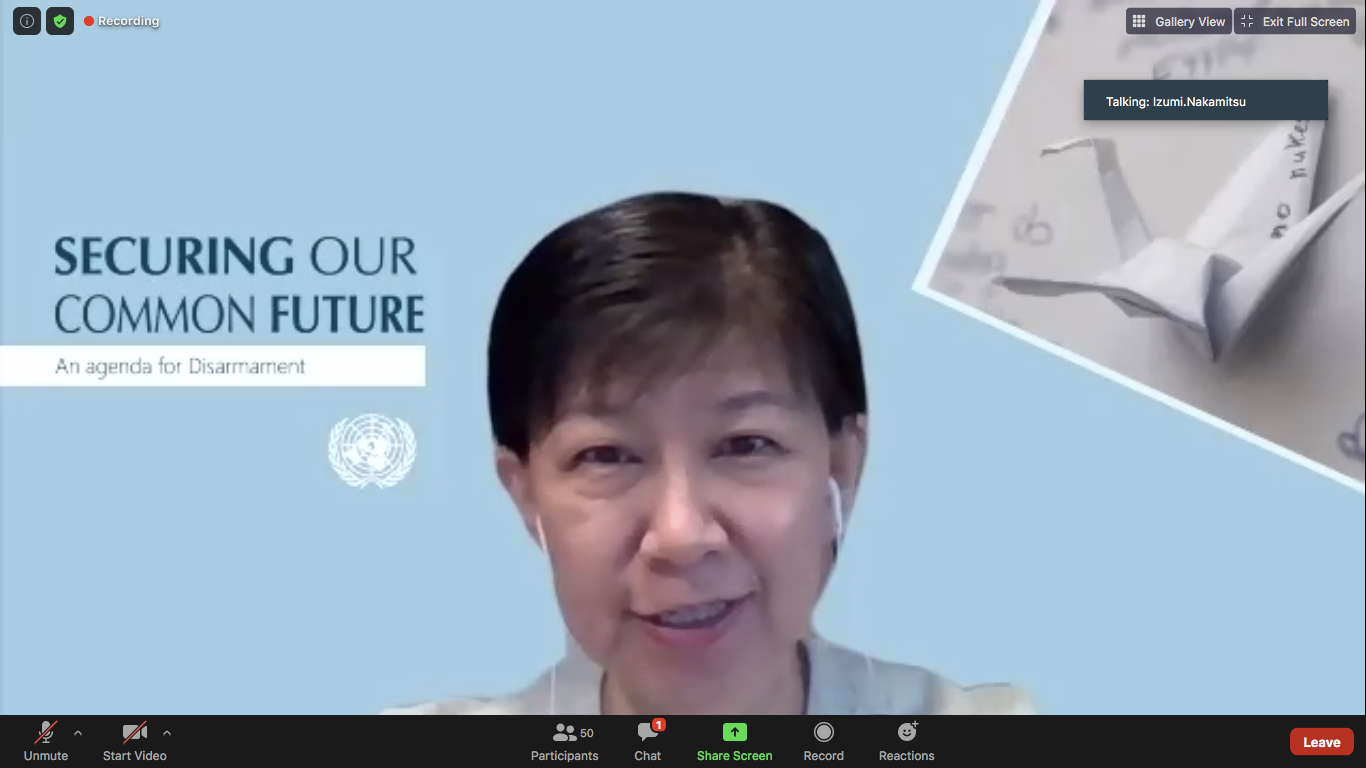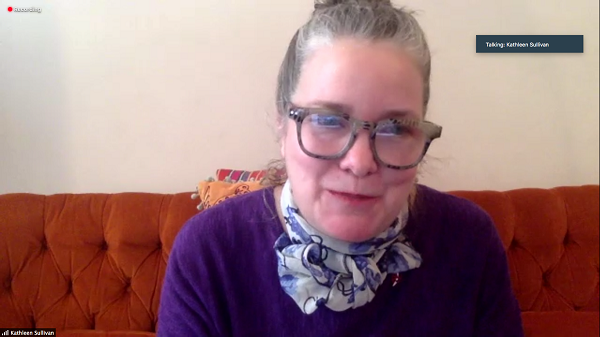
News
Event to Launch “Navigating Disarmament Education: The Peace Boat Model”
An event organized by the United Nations Office of Disarmament Affairs (UN ODA) was held on November 3, 2020 to mark the release of a publication introducing Peace Boat’s methodology for disarmament education. The publication, written by Hatakeyama Sumiko and Kawasaki Akira of Peace Boat with the assistance of Meri Joyce, is part of the series “Civil Society and Disarmament” which is published by the UN ODA within the context of the General Assembly resolutions on the United Nations Disarmament Information Programme and the United Nations Study on Disarmament and Non-proliferation Education.
“Navigating Disarmament Education: The Peace Boat Model” directly stems from lessons learned through the implementation of various disarmament education programmes over the past decades. As a steering group member organization of the International Campaign to Abolish Nuclear Weapons (ICAN), Peace Boat has been particularly active in engaging hibakusha—atomic-bomb survivors of Hiroshima and Nagasaki. The publication also discusses how disarmament education should be implemented in relation to the UN Sustainable Development Goals (SDGs) and how digital technologies can be leveraged to provide a fruitful experience for participants.

Moderated by Ms. Diane Barnes of the UNODA, the event opened with remarks from Ms Izumi Nakamitsu, the United Nations High Representative for Disarmament Affairs. Ms Nakamitsu said “Peace Boat was founded by university students in the early 1980s. At the time, bodies like the UN General Assembly had only just recognised disarmament education as a valuable tool to address dangers from all kinds of weapons from the small arms which threaten communities to the nuclear arms which put us all at risk. Peace Boat developed a unique approach to this emerging field centered on helping individuals of all backgrounds to bridge their differences to develop common understandings”.

Kawasaki Akira who has been leading the leading Peace Boat’s Hibakusha Project and Global University programs, briefly outlined the three pillars of the Peace Boat disarmament education model. Firstly it is important to understand the humanitarian aspects of the issue and develop a sense of empathy which in the case of Peace Boat is to listen to the voices of survivors. Secondly, to recognize the threats and dangers that exist in the world – why there are weapons in the world and what that means for our everyday lives and finally to learn methods for taking action that facilitates disarmament.

Hatakeyama Sumiko, lead author of the book spoke about her own personal experiences to demonstrate the starting point of the Peace Boat disarmament model – to feel the impact of the weapons. When she was 19 she volunteered with Peace Boat as an interpreter on the voyage in which 104 atomic bomb survivors were taking part, during the first "Global Voyage for a Nuclear-Free World: Peace Boat Hibakusha Project." The stories that she heard from them had an impact on her, as through their testimony she came to understand how a nuclear weapon had destroyed lives. Sumiko continued to explain the second pillar and that disarmament educators must contextualize the testimonies, putting the Hibakusha experience of the nuclear bombings within the context of World War II, as well as acknowledging those affected by nuclear weapons through testing or mining for example. Finally, Sumiko gave examples of how youth who have been a part of disarmament education programs onboard Peace Boat had found their own creative ways of taking action as an example of the third pillar.

Akira and Sumiko were joined in the event by two experienced disarmament educators with whom Peace Boat has been honoured to work closely with over the years, Dr Kathleen Sullivan, Director of Hibakusha Stories, and Dr Randy Rydell, Executive Advisor of Mayors for Peace and former Senior Political Affairs Officer in the UN ODA. Dr Sullivan gave examples of Peace Boat’s impact citing a voyage in 2005 that brought on board youth from seven nuclear weapons armed states, saying “that experience changed those youth forever”. According to Dr Sullivan, the first Global Voyage for a Nuclear Free World was the start of Hibakusha Stories, a project which has “brought the message of Hiroshima and Nagasaki to more than 40,000 young people”.

Dr Rydell has also joined Peace Boat voyages on several occasions. Commenting on the book in the event, he shared that "the idea of the three pillars I think is extremely well taken. The three pillars being empathy, knowledge, and practical skills for activism. These are three of the most crucial elements needed to effect the one missing ingredient that always comes up in discussions of disarmament - which is the lack of what is called ‘political will’."

During the ensuing discussion between the four panelists, Akira spoke of the challenge and process of learning how to contextualize the Hibakusha testimonies according to the audience, each with their own understanding of nuclear weapons and of war in general. Answering a question from the audience about how to continue disarmament education using the voice of Hibakusha when they will no longer be with us to tell their own stories, Sumiko introduced various methods including recording Hibakusha testimonies and the use of art or objects from the bombings that also tell a story and provoke feeling about the impact of the weapons.
The event closed with John Ennis, Head of the Information and Outreach Branch of UNODA reflecting on the book. He remarked that what impressed him about the book was that it was “a true analytical deconstruction of the pedagogical methodology” and that he appreciated a book that showed the ‘nuts and bolts’ of how disarmament education works.
Peace Boat is grateful to the UN Office of Disarmament Affairs for hosting the event and for publishing the book, to Dr Sullivan and Dr Rydell, and to all those who have shared their testimonies for disarmament education.
The full publication can be downloaded for free here: https://www.un.org/disarmament/civil-society-and-disarmament-2020/

